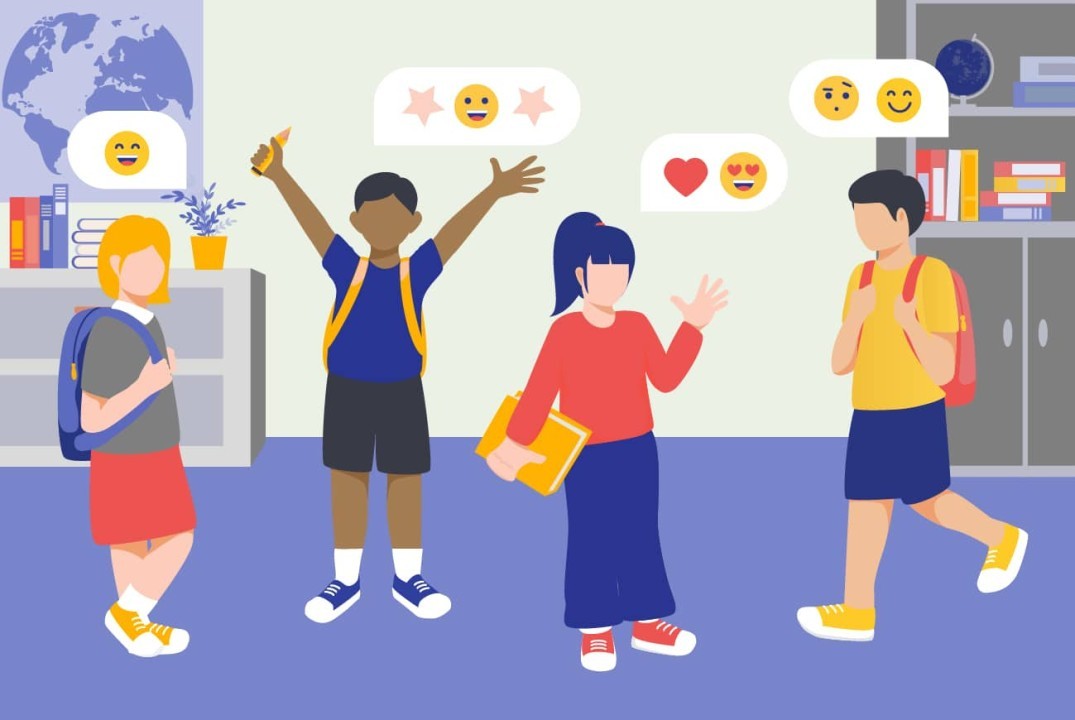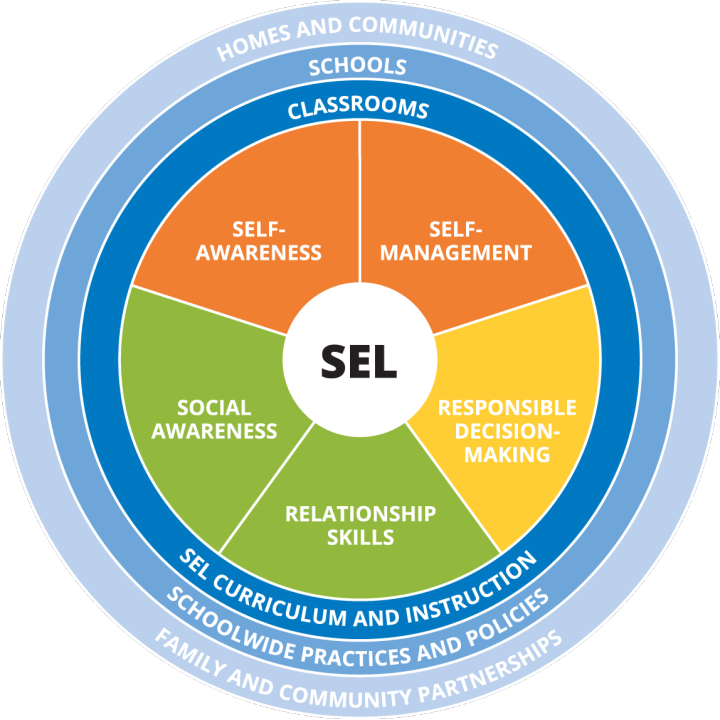4 Social Emotional Learning (SEL)

Social and Emotional Learning (SEL) plays a critical role in the context of digital media in therapy and support. By emphasizing SEL in conjunction with digital education, educators can create a more holistic learning environment that prepares students for both academic and personal success (Abdo et al., 2022). As digital technologies become increasingly integrted into education, the importance of SEL becomes more pronounced for several reasons.
- Enhancing Student Engagement and Motivation
- Fostering Collaboration and Communication
- Supporting Mental Health and Well-being
- Building Critical Thinking and Problem-Solving Skills
- Promoting Inclusivity and Equity
- Enhancing Teacher Effectiveness
- Preparing for Future Workplaces
There are five competencies of SEL that fosters a postive learning community where learners feel comfortable communicating and sharing ideas. These competencies also help students cope with individual ownership over learning outcomes and develop a sense of shared ownership within the learning community (Avdiel & Blau, 2020).

In 2013, Oxford Dictionaries declared “selfie” as the word of the year, defining it as “a photograph that one has taken of oneself, typically one taken with a smartphone or webcam and uploaded to a social media website” (Oxford University Press, 2013, para. 1). Research has found selfies are starting to be seen as beneficial for self-development linking to having positive body image and personal growth (Behm-Morawitz & Choi, 2018). The study utilized a uses and gratifications approach with an online survey of 205 millennial to explore selfie-takers’ activities and their links to positive effects like digital literacy and self enhancement. Participants uploaded their best selfies and answered questions about their selfie-related attitudes and behaviors. Content analysis of these selfies reveals that particpants viewed selfies as meaningful content, primarily motivated by the desire to capture memorable moments ((Behm-Morawitz & Choi, 2018). The broader implication of selfies’ connection to education is that educators can incorporate everyday media practices, such as taking selfies, into their classrooms to make learning more relevant and engaging to thrive in a digitally driven society.
References
Abdo, A., Brown, A., Koresky, J., McMahon, M., & Michie, S. (2022). Social and emotional learning. Classroom Practice in 2022. Retrieved from https://ecampusontario.pressbooks.pub/educ5202/chapter/social-and-emotional-learning/
Avdiel, O., & Blau, I., Shamir-Inbal, T. (2020). How does the pedagogical design of a technology-enhanced collaborative academic course promote digital literacies, self-regulation, and perceived learning of students? The Internet and Higher Education, 45, 100722-. https://doi.org/10.1016/j.iheduc.2019.100722
